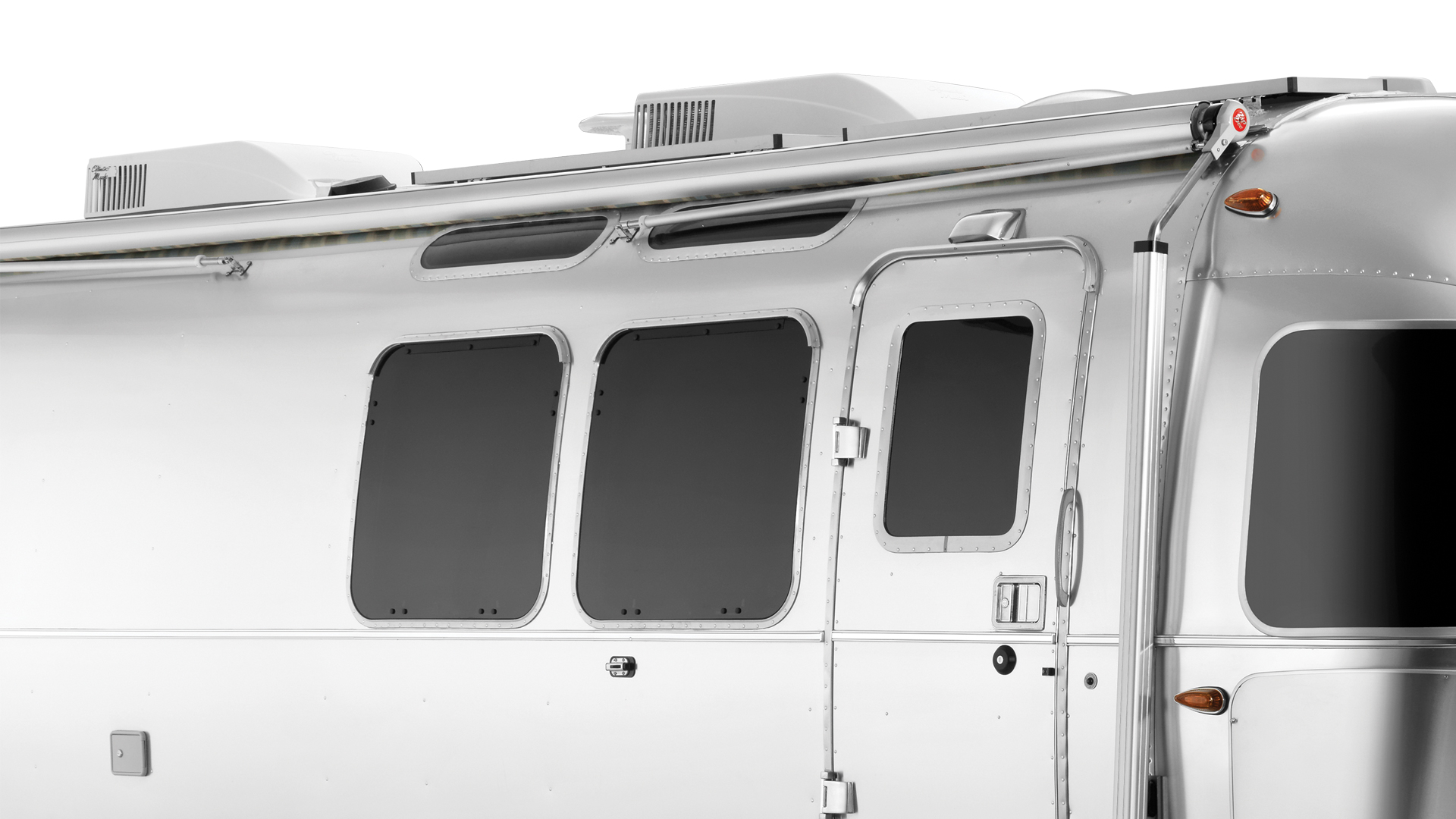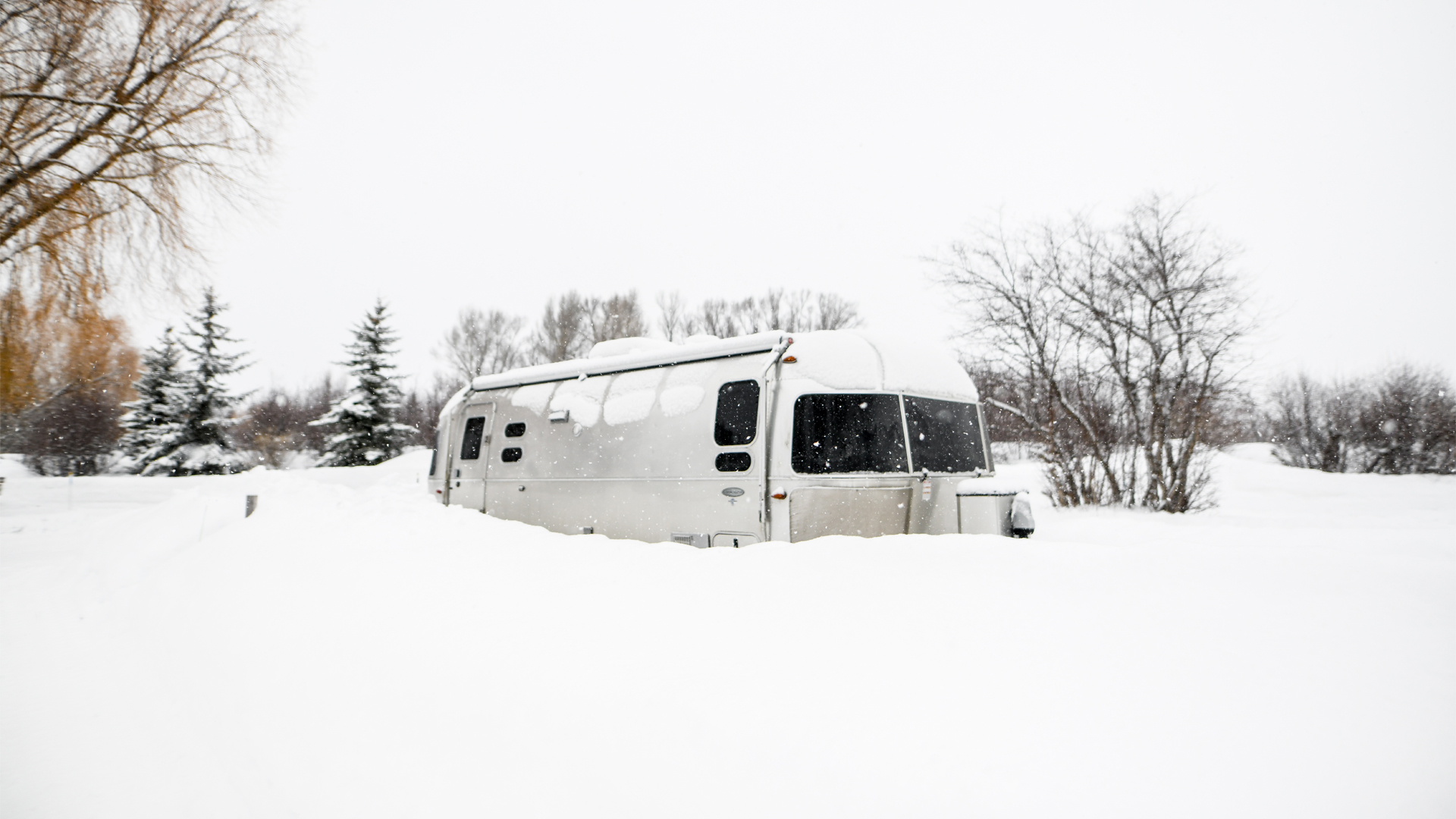Covert inside the air conditioning system on the roof of your Airstream is a helpful, underutilized, and misinterpreted winter heating function Learn more about how, why, and when to utilize heatpump and heat strips
You ‘d be forgiven for thinking about your Airstream’s air conditioning system as a gadget that keeps you warm. Returning to a cool, comfy location to unwind after a hot summertime day of outside activities is among the very best aspects of an Airstream– among the conveniences of house we enjoy to bring when we take a trip.
However concealed inside your Airstream’s roof cooling system is an effective, flexible, and effective methods of cutting the chill and heating up on cold days: a heatpump (or its close cousin, the heat strip). Every Airstream travel trailer comes requirement with an a/c unit and heatpump, other than Bambi Travel Trailers and Basecamps that include heat strips rather of heatpump. These peaceful, effective gadgets operate on electrical power and can warm you up on cold early mornings — without needing to burn gas running your heater.
Heating System vs. Heatpump
Your Airstream travel trailer includes an extremely effective heater anchored by a heater sustained by liquid lp gas (LPG). Little however mighty, your Airstream heater keeps you warm and cozy– as long as you have gas in the tanks. The blower that flows warm air throughout your travel trailer works on electrical power, however its low power draw makes the heater a terrific choice for preserving your batteries when you’re camping off the grid in chillier temperatures.
However for those times when you’re linked to coast power at a campground, your Airstream’s heatpump is the ideal choice when you get up on a cold early morning. Instead of shooting up the heater and consuming valuable gas, set your Airstream’s thermostat to the heatpump setting (typically shown by an HP or comparable on the thermostat screen). As long as the ambient outside temperature level is above about 40 degrees Fahrenheit, the air conditioning system’s heatpump will warm the air inside your Airstream and cycle it through the QuietStream ductwork in the ceiling. You’ll be warm by the time the coffee has actually brewed– and you will not have actually burned any gas at the same time.

Picking in between the heatpump and the heater is simple– just pick the preferred function on your Airstream’s thermostat. On current Airstream thermostats, the heater is generally identified FURN and the heatpump choice is generally identified as HP (once again, inspect your handbook for specific operation).
The Innovation Behind the Magic of a Heatpump
A/c unit do the wonderful work of turning warm air into cool, revitalizing convenience, however the very same innovation operates in reverse when you switch on your heatpump. To comprehend how a heatpump works, you should initially comprehend the procedure of how an air conditioner works.
The truth of cooling innovation is less about developing cold air and more about getting rid of the heat from the interior air and moving it outside. A by-product of this procedure is that cool air is produced and cycled back inside by means of a blower and vents.

The secret to all this working is the refrigerant inside the air conditioning system system, generally discovered in either a fluid or gaseous state, depending upon the temperature level and pressure. The refrigerant streams through the system by means of copper coils, starting with a cold evaporator coil. As warm air is cycled around the cold evaporator coil, the refrigerant inside the coil heats up and modifications from a liquid to a gaseous state while continuing to stream towards the air conditioning system’s compressor. Throughout this heat transfer procedure, the refrigerant soaks up the heat as the warm air cools off prior to it is cycled back into the interior to produce a comfy environment.
On the other hand, the warm, gaseous refrigerant inside those copper coils keeps streaming into the air conditioning system’s compressor. Inside the compressor, the warm refrigerant is pressurized, additional increasing its temperature level. The now superheated vapor enters the condenser where it is exposed to exterior air. Heat is soaked up into the outside air, decreasing the refrigerant’s temperature level once again, altering it back into a liquid state as it cycles back around to begin the procedure over once again.
This heat transfer procedure continues up until the thermostat signs up the air has actually cooled to the set temperature level, stopping the procedure up until the temperature level increases once again.
Reversing the Process for Warm Air
Basically, an A/C’s heatpump setting reverses the circulation of refrigerant, along with reversing the functions of the interior evaporator coil and outside condenser coil Cold air still brings heat, and as long as the outside temperature level has to do with 40 degrees Fahrenheit or greater the condenser can take in that heat in an exchange that cools off the refrigerant. The cool refrigerant is pressurized, which turns it into a hot gas that enters the interior coil where the cool inside air is cycled through by the blower. The hot refrigerant inside the coil warms the streaming air as it cycles back through your ducts Then the refrigerant is cycled back around to the outside coils to keep the procedure moving.
What About Heat Strips?
For owners of Basecamp, Airstream Bambi Travel Trailer s, and some older designs ( check your user’s handbook for information on your cooling system), comparable heating outcomes are accomplished by means of the usage of a heat strip instead of a heatpump. While a heatpump produces warm air through a procedure of pressurization and heat transfer, the heat strip in your Basecamp or Bambi Travel Trailer produces heat by passing air over wires heated up by the circulation of electrical power. The heatpump is among the choices on your A/C’s control dial.
This procedure is called resistance heating, and gadgets with this kind of heating component prevail in numerous houses and Recreational vehicles– electrical heaters, electrical baseboard heating systems, and numerous area heating systems use electrical resistance to produce heat. Any wire will fume when you require adequate electrical power through it– you see (and feel) this in incandescent light bulbs and the radiant wires down inside a toaster. In basic, the more resistance that electrical power encounters as it streams through a wire, the more the wire warms up. This is why numerous electrical devices and gizmos warm up when powered on, and why computer systems and electronic devices frequently need fans and blowers to restrict the heat.
Heat can be bad for delicate electronic devices devices, however when it concerns comfort, the heat produced by the circulation of electrical power can be helpful. While there is a lot more innovation behind it, resistance heating is the procedure at the heart of your Bambi’s heat strip. Warm air is cycled through the system and passed throughout wires superheated by the circulation of electrical power through them.
Electric or Gas: You Have Alternatives in Your Airstream
Whether you’re avoiding the grid for a couple days or outdoor camping in the reasonably high-end of a full-hookup camping site, your Airstream travel trailer includes several choices for cutting the chill. If you’re handling the excitement and obstacle of cold-weather winter season outdoor camping, your heater exists to produce a warm and cozy interior to come back to after a cold walking.

And if you’re camping in the shoulder seasons of Spring or Fall, the heatpump or heat strip in your air conditioning system will supply much of the heat you require on cold early mornings prior to the sun is totally up.
Have other concerns about the numerous functions and functions in your Airstream travel trailer? Go into our brand-new Airstream Assistance website for particular details about your design or check out Airstream Academy for basic details on hitching, hauling, outdoor camping, and more.